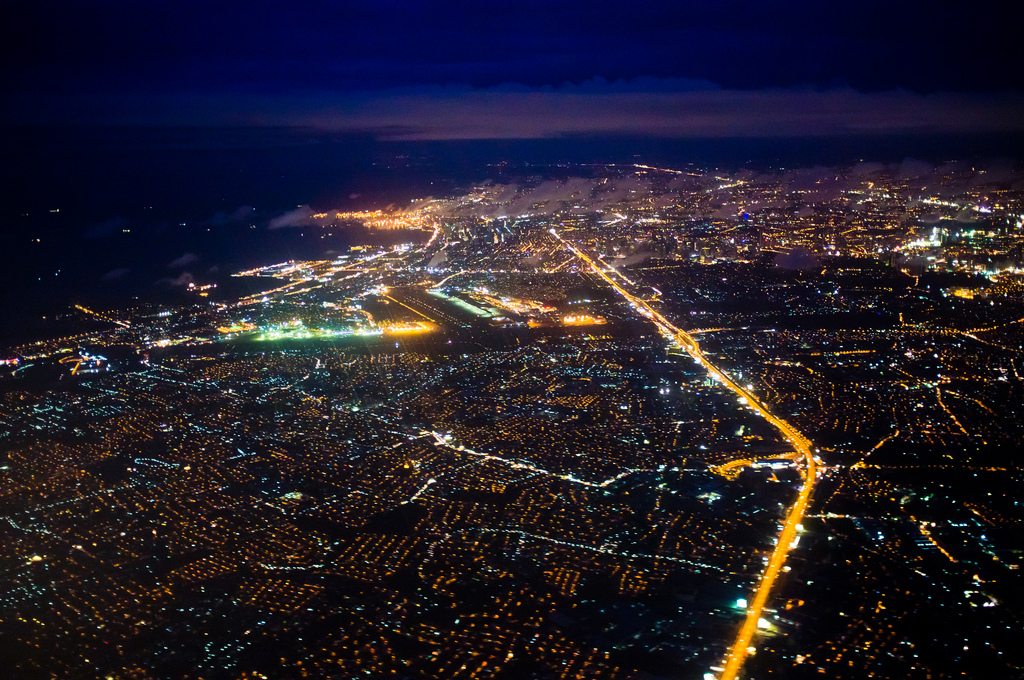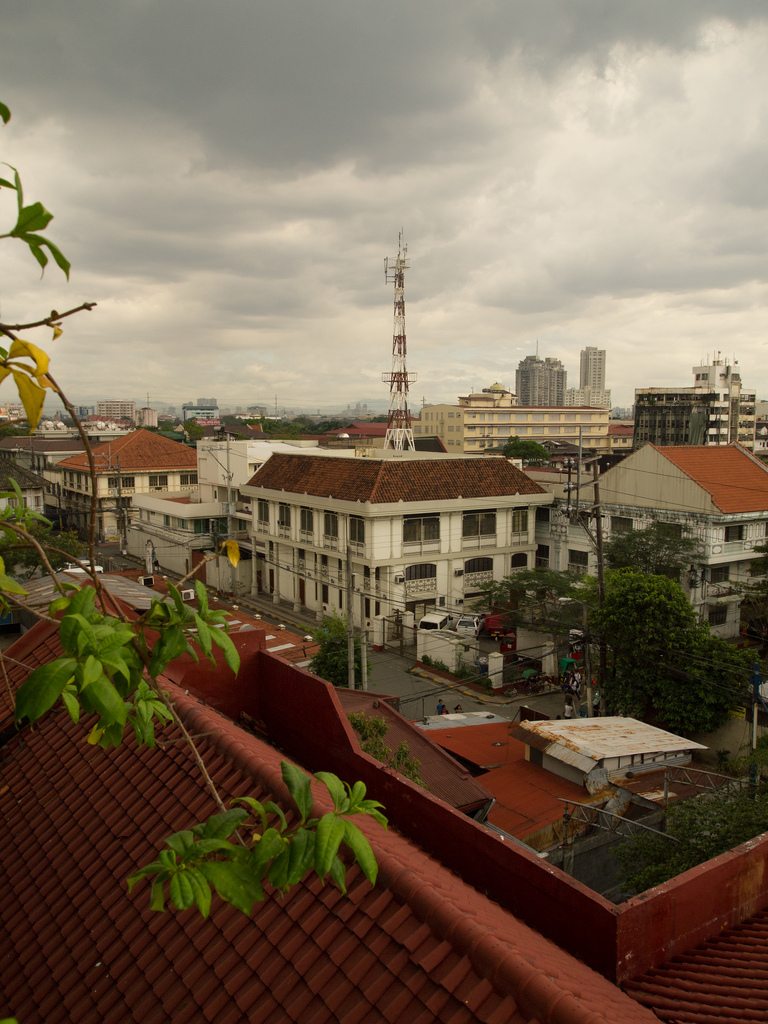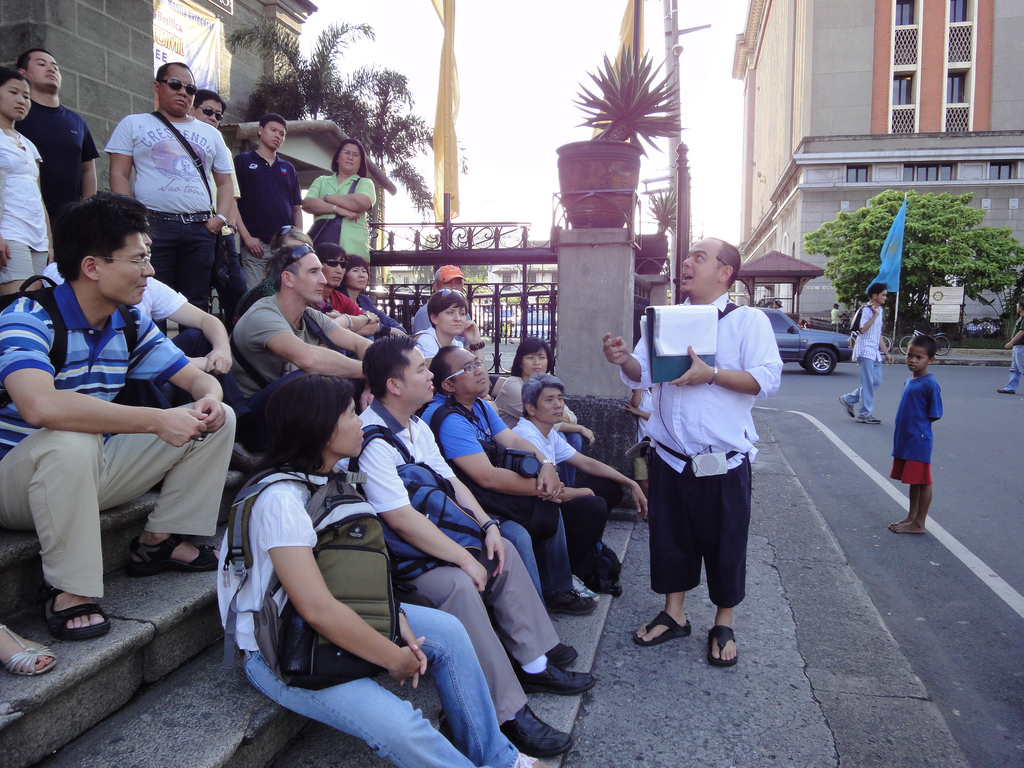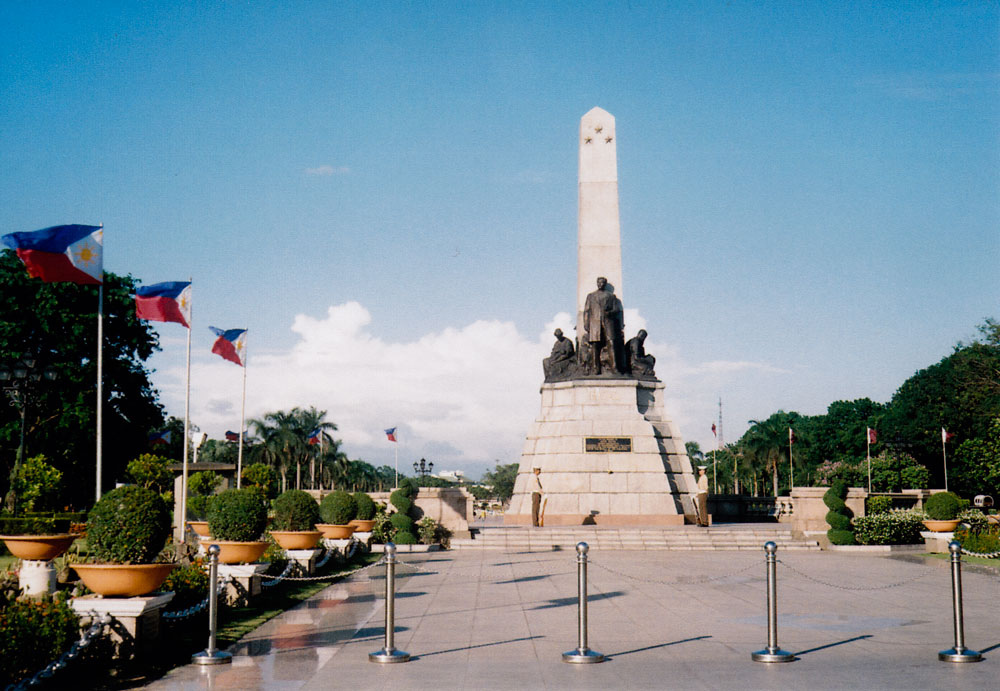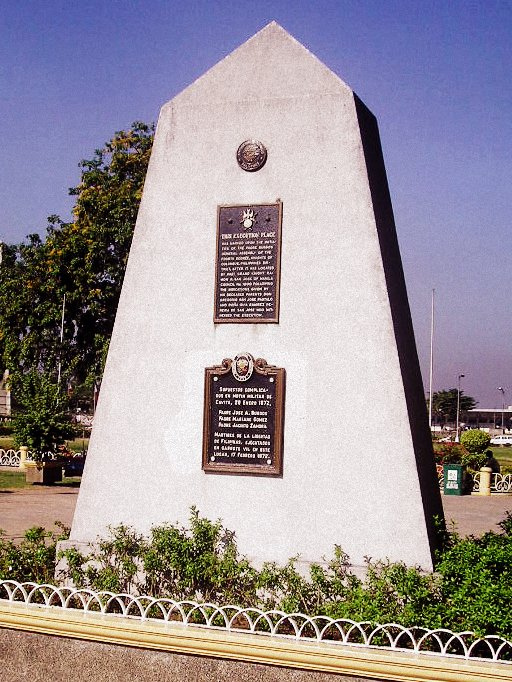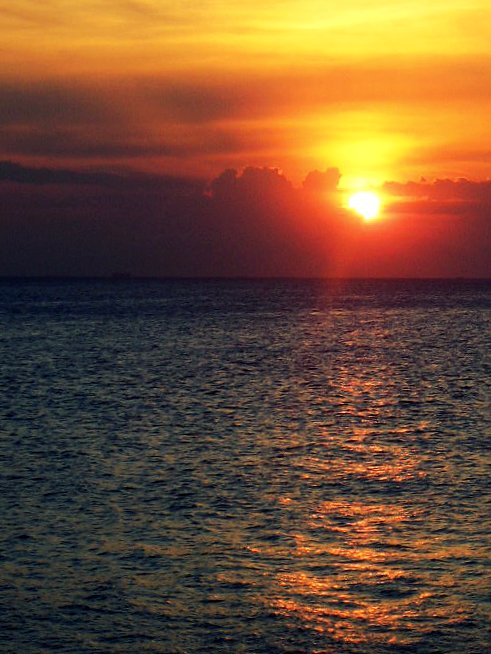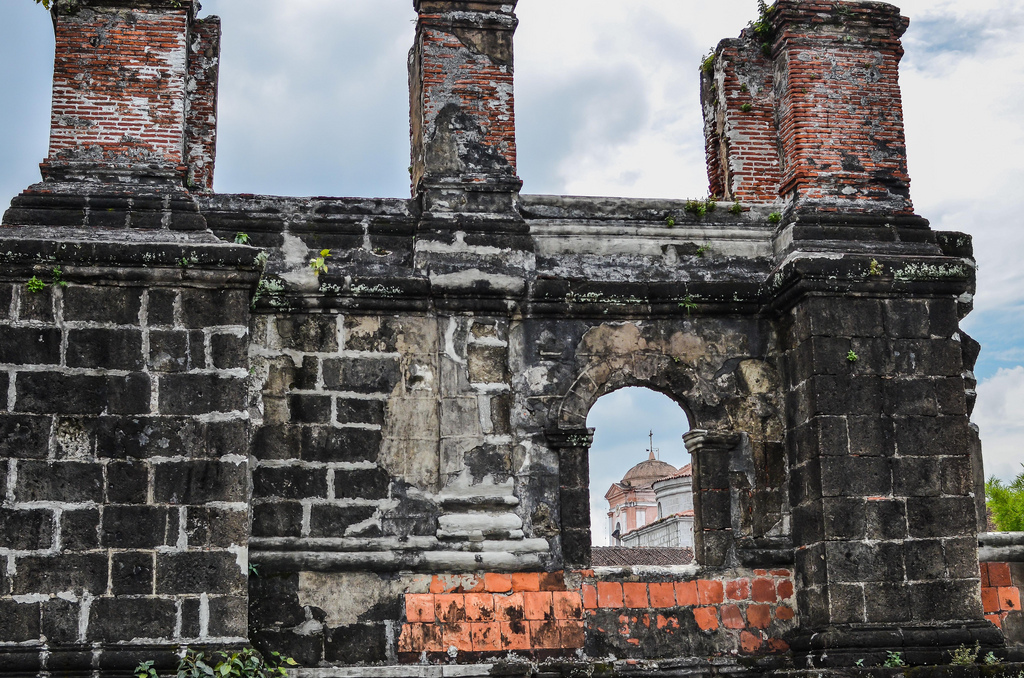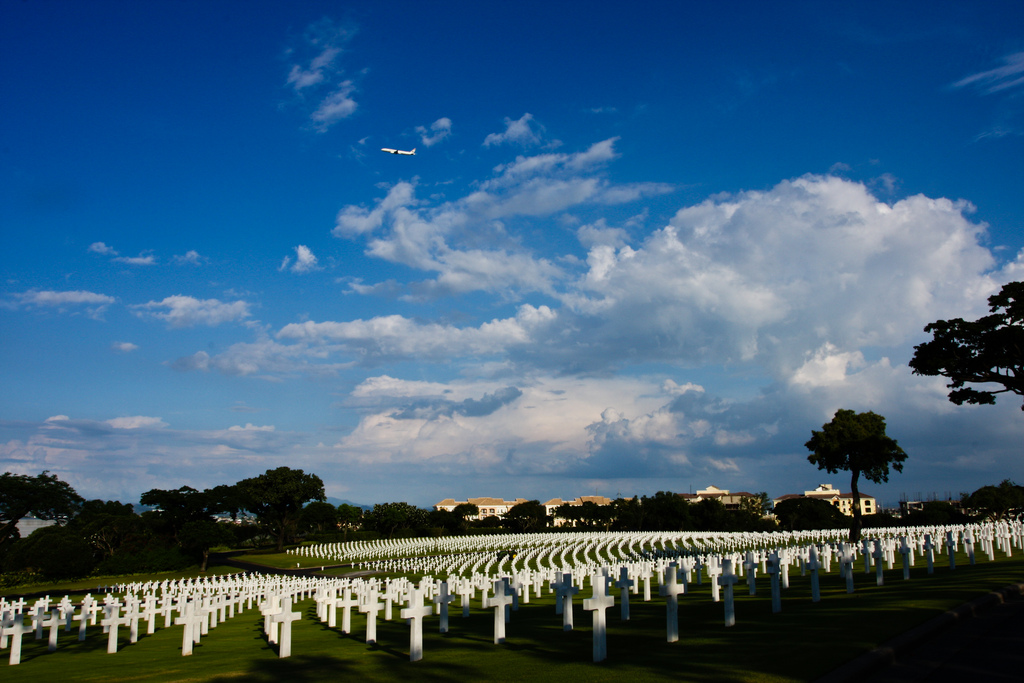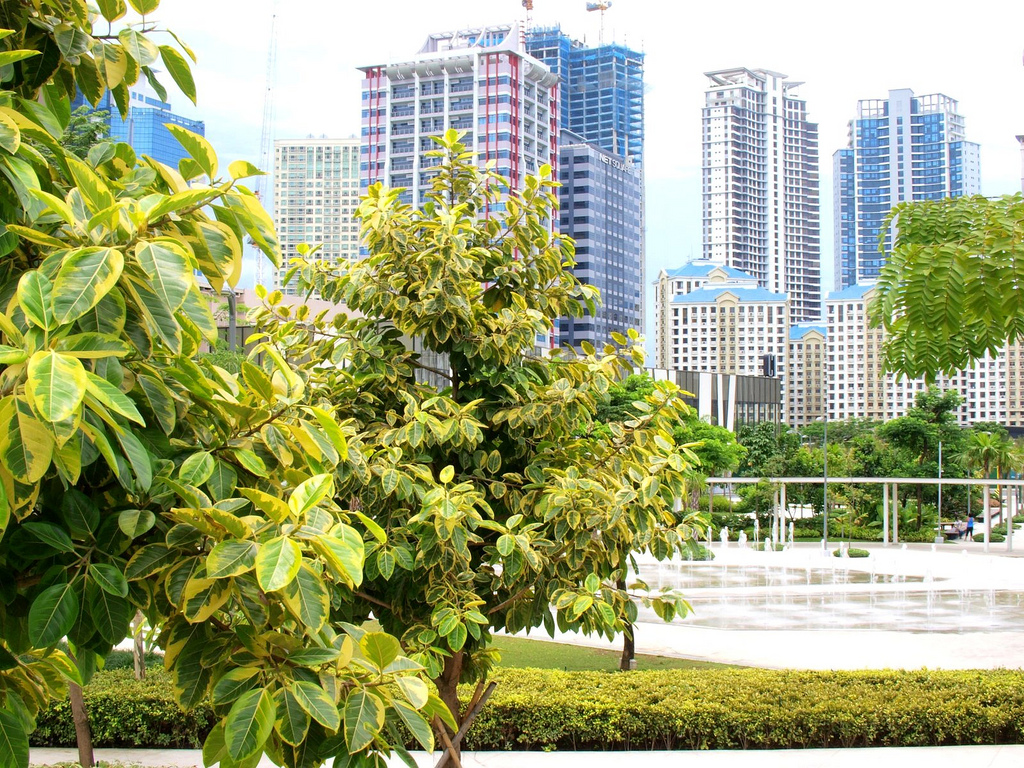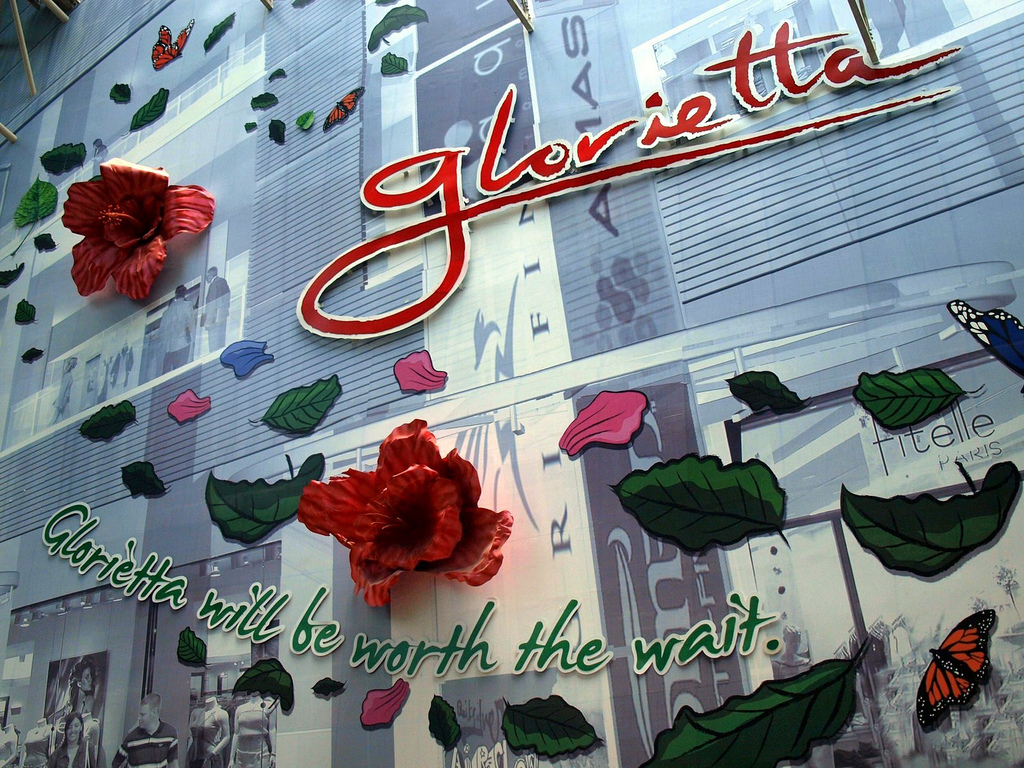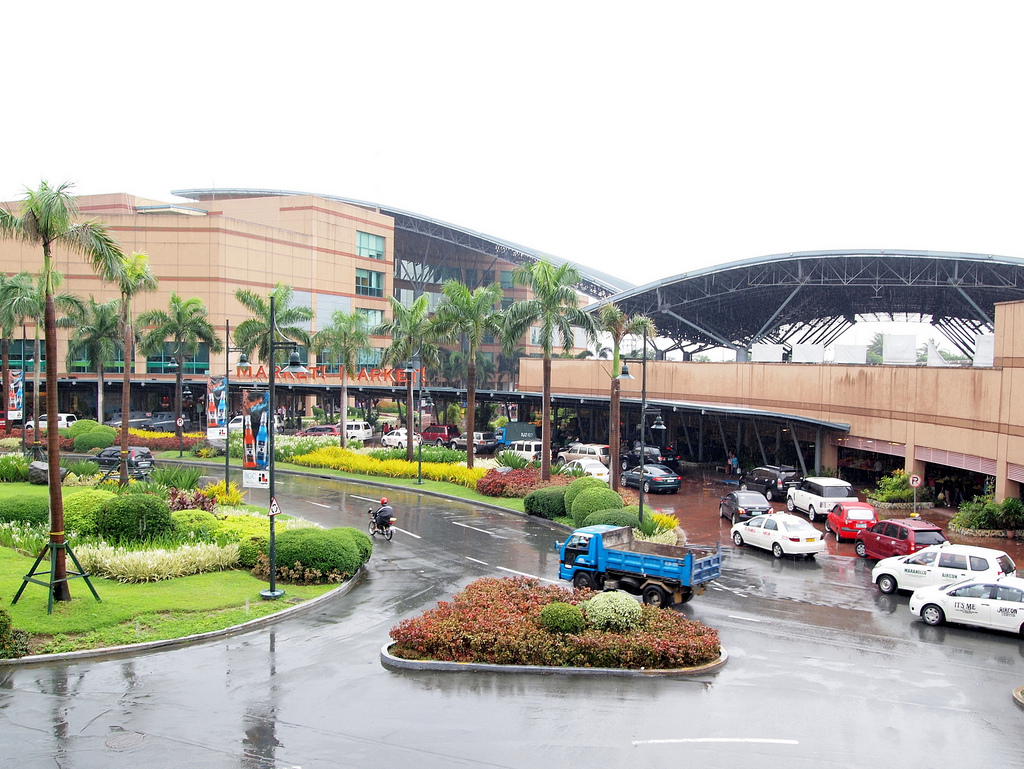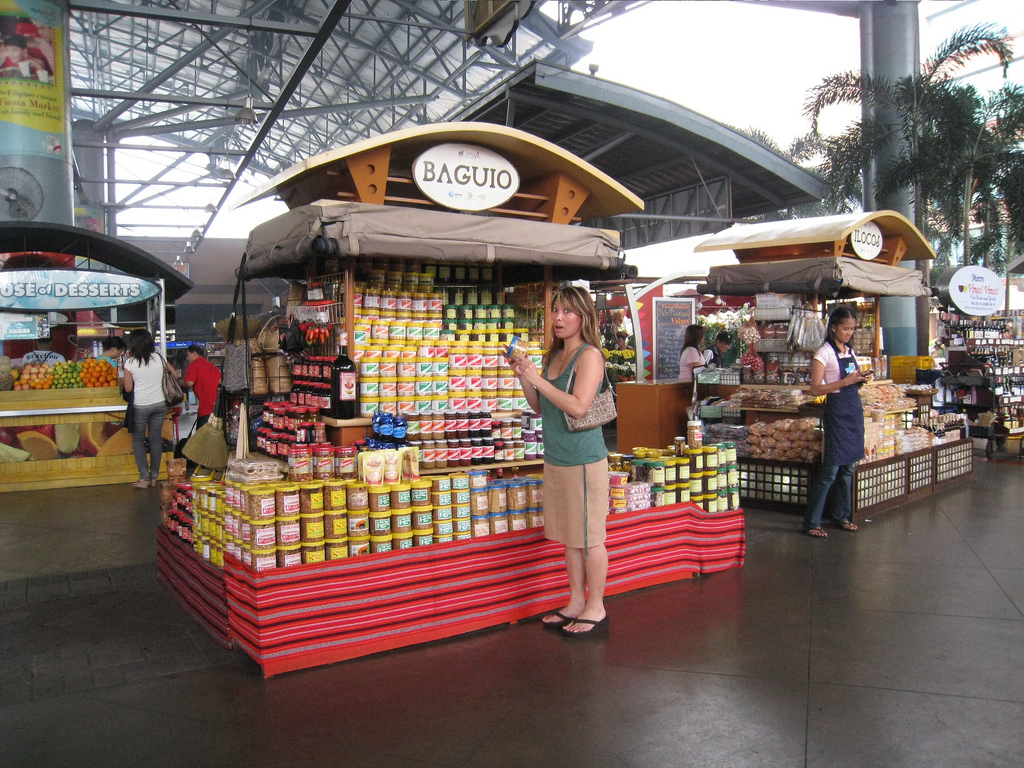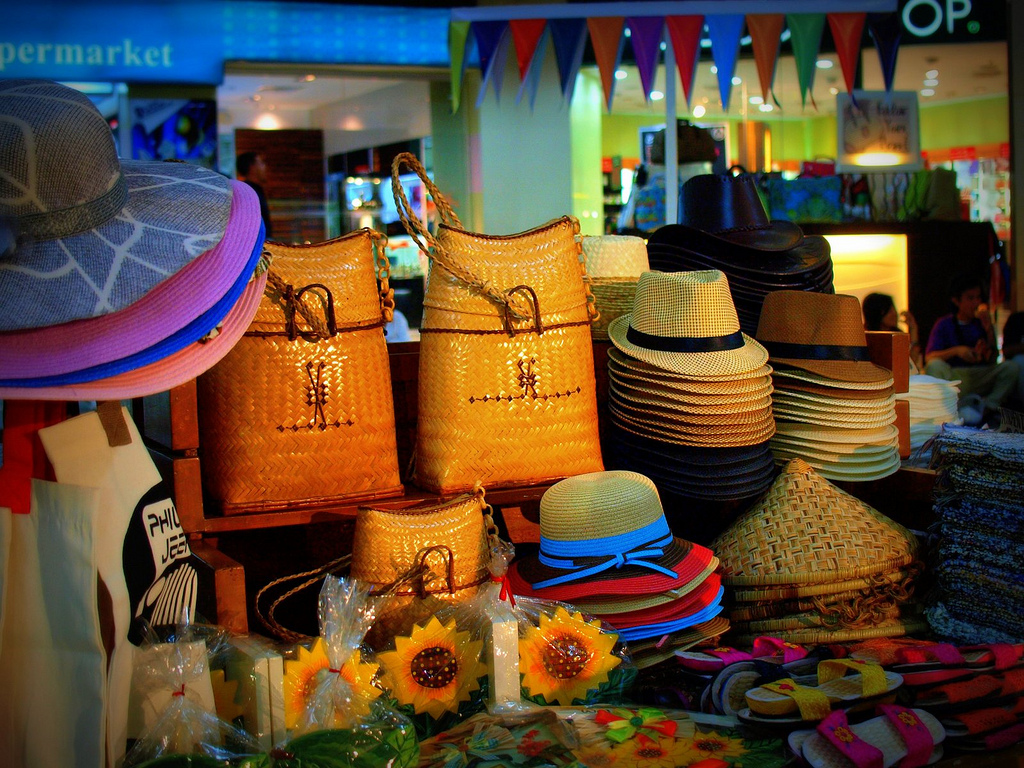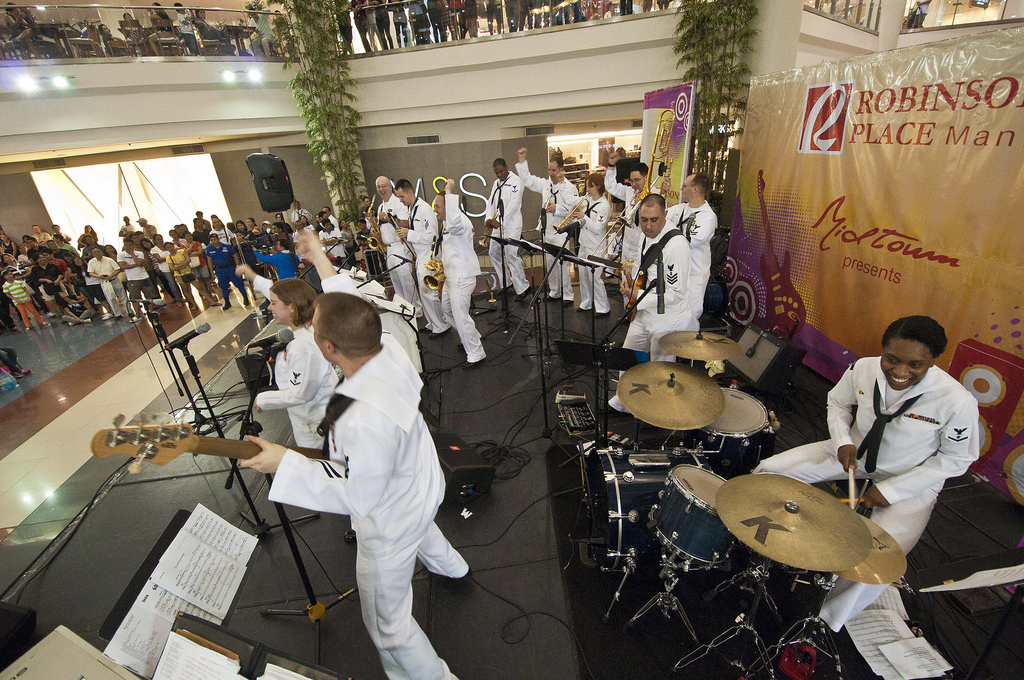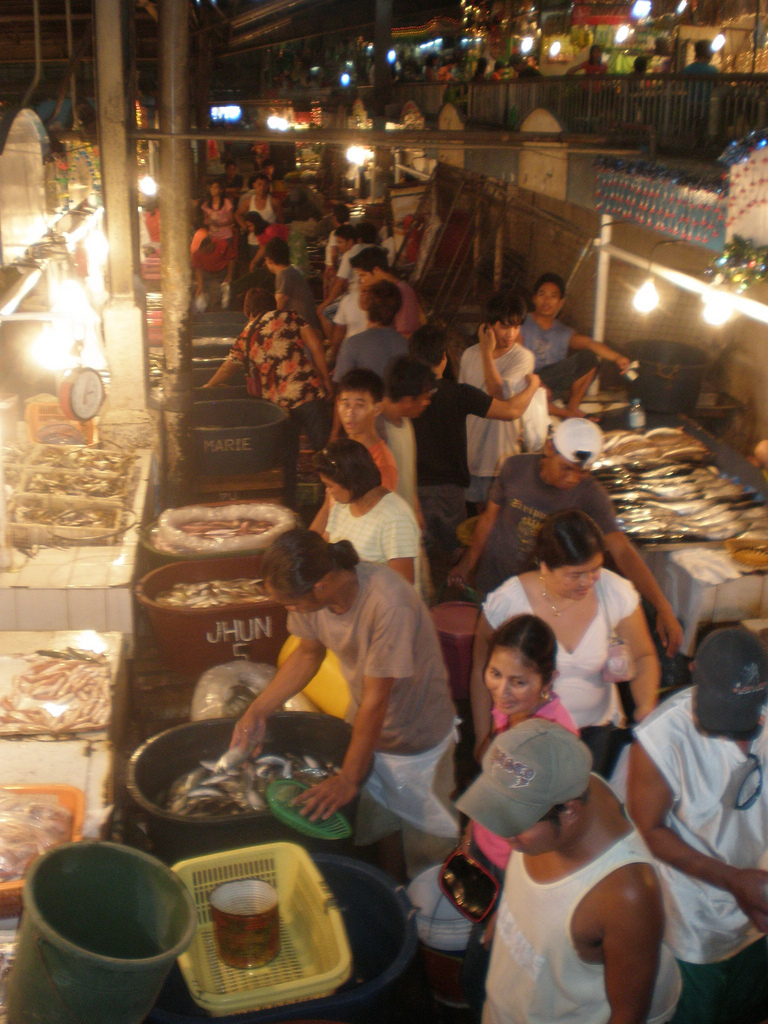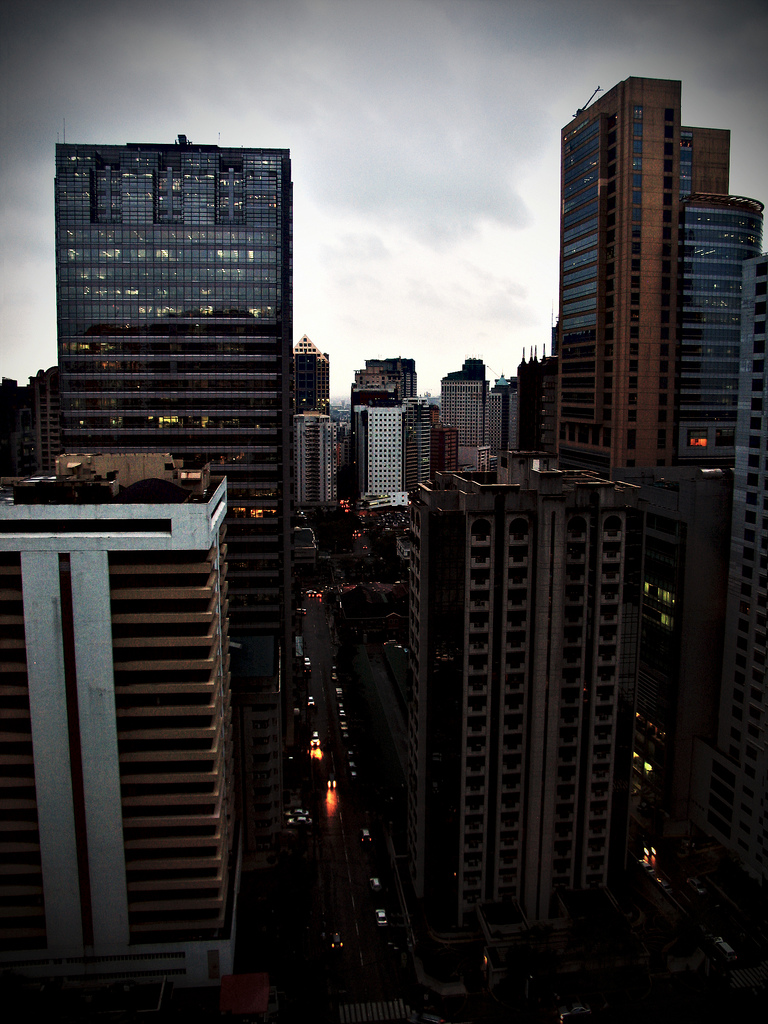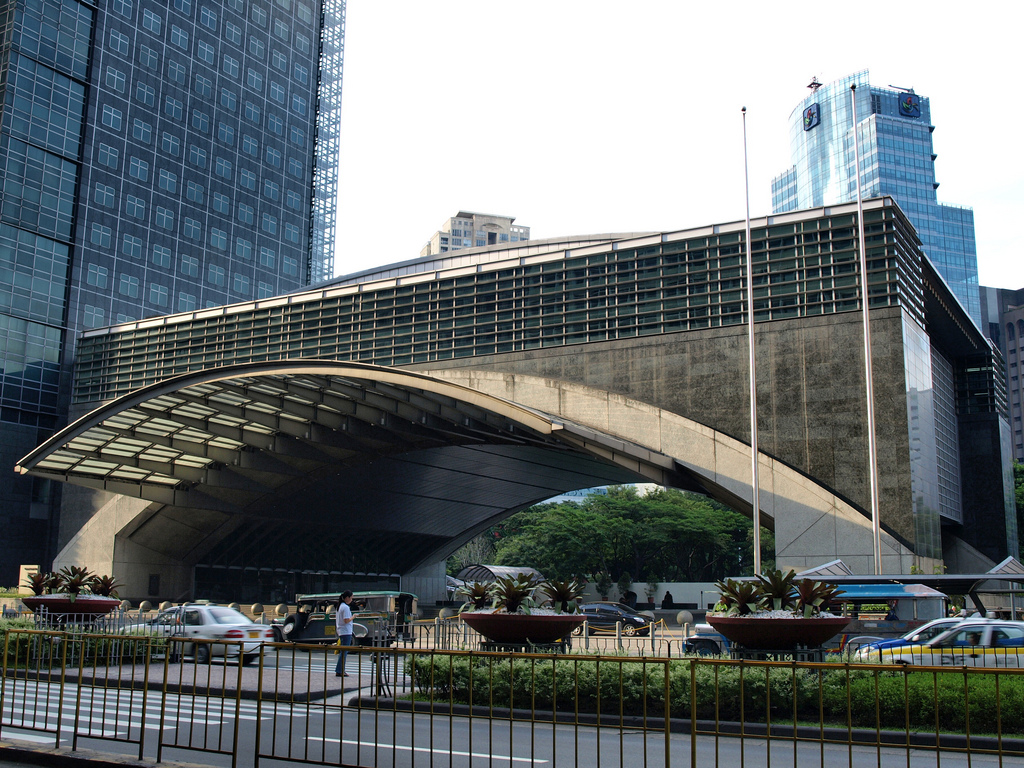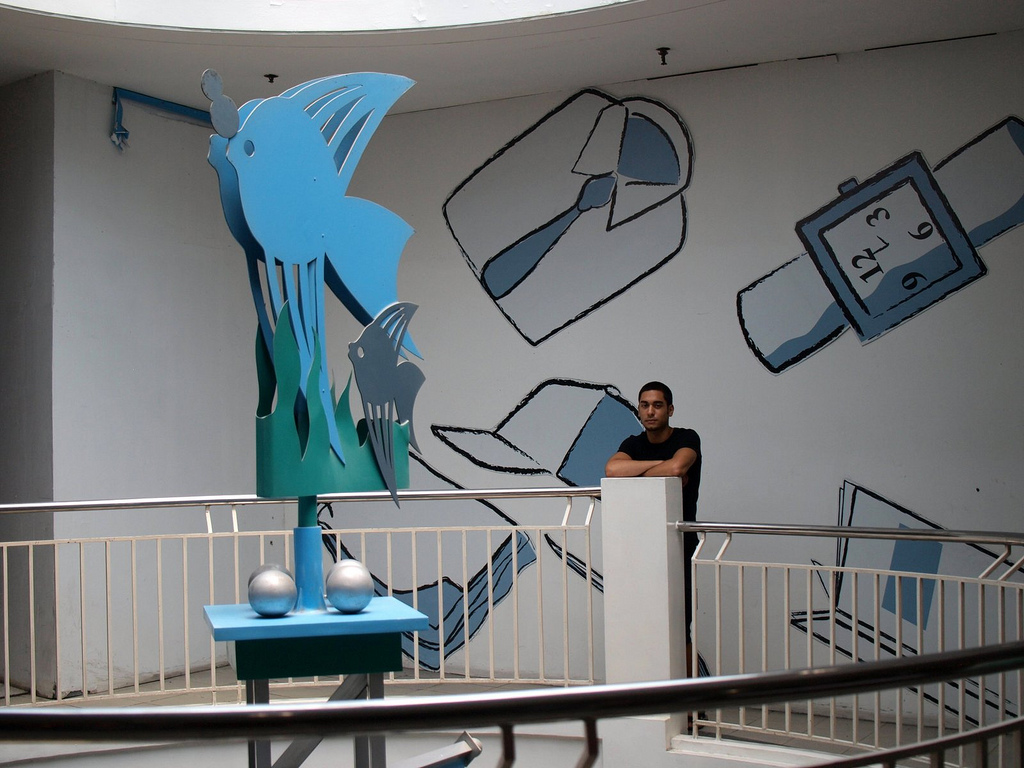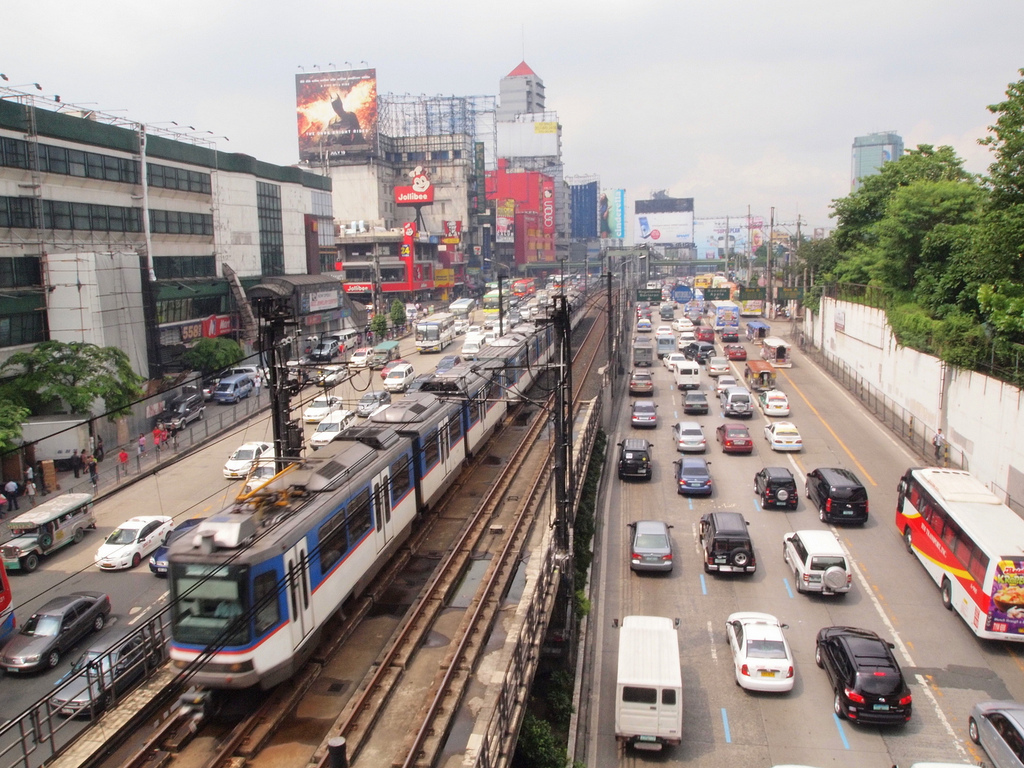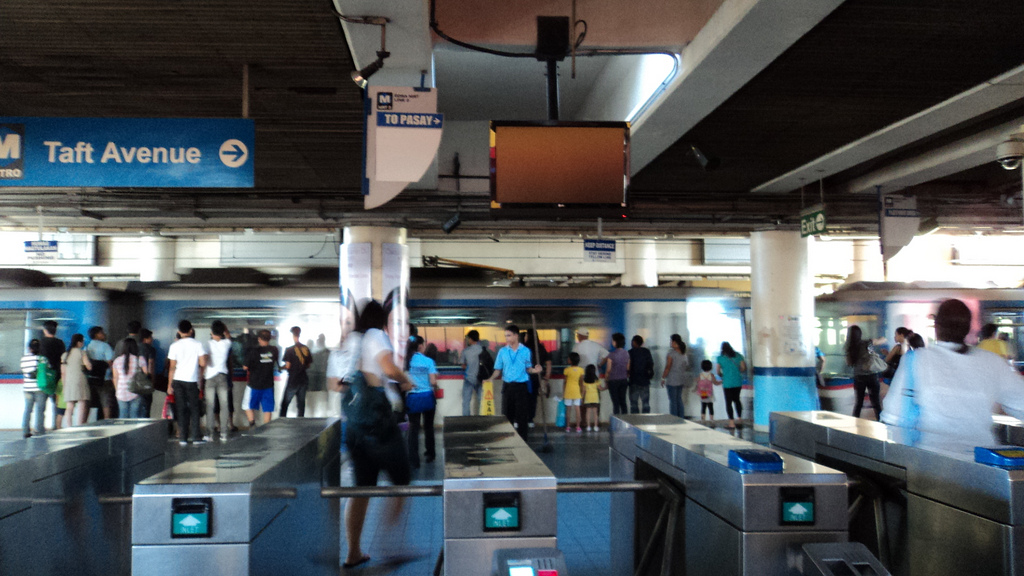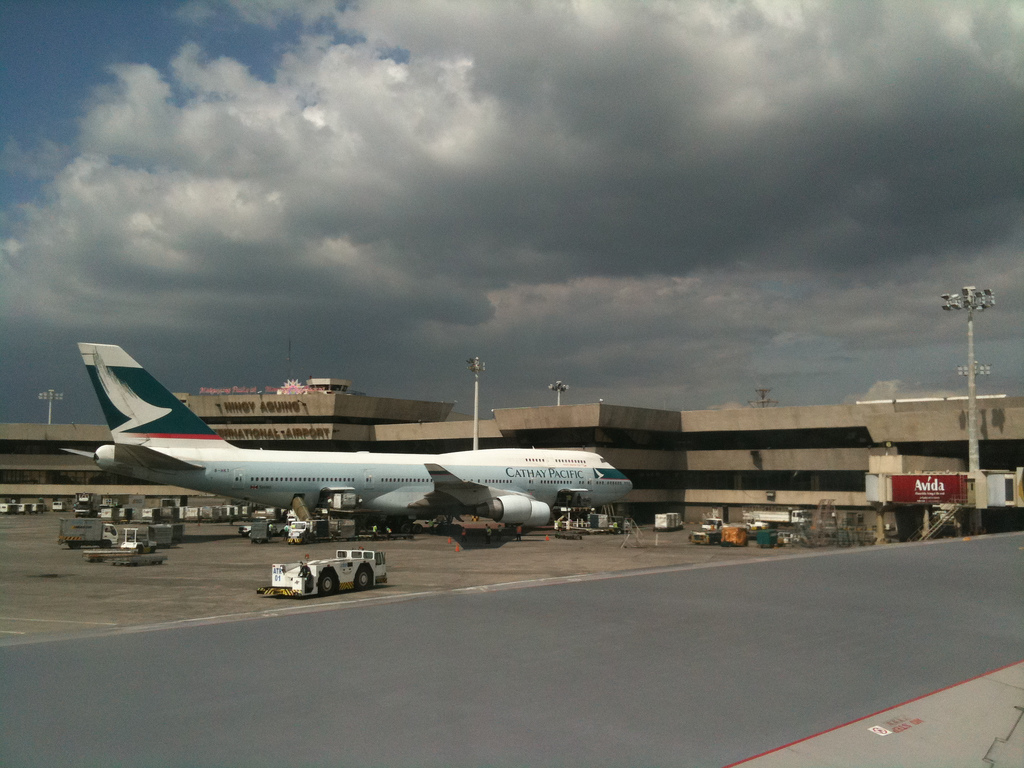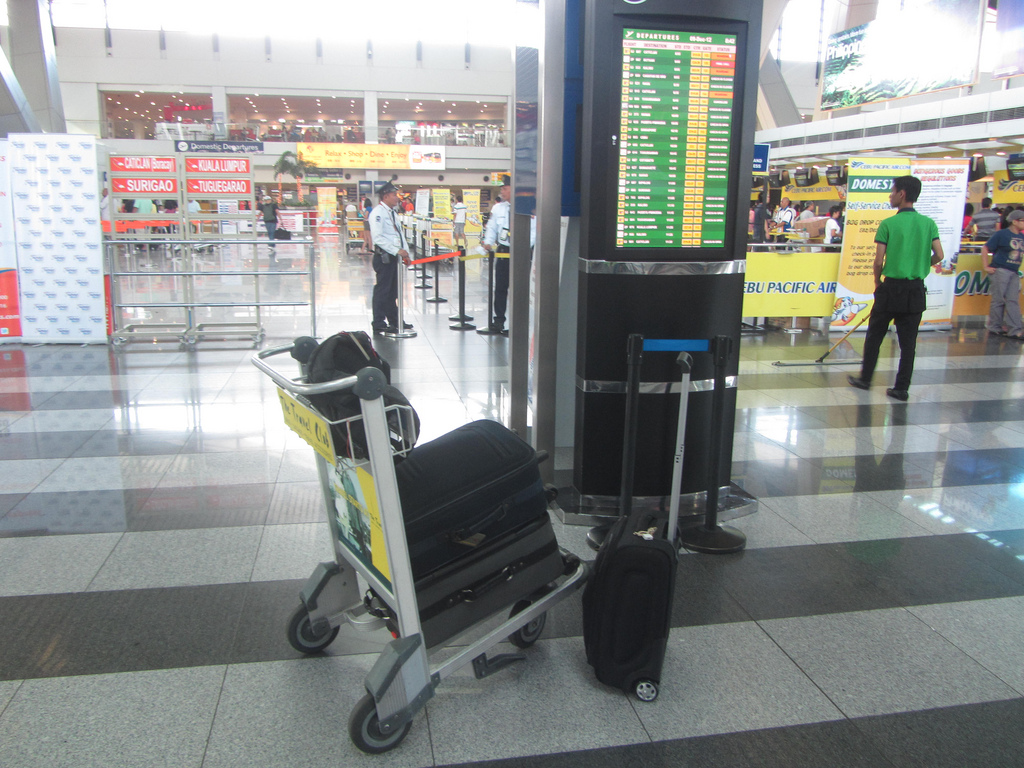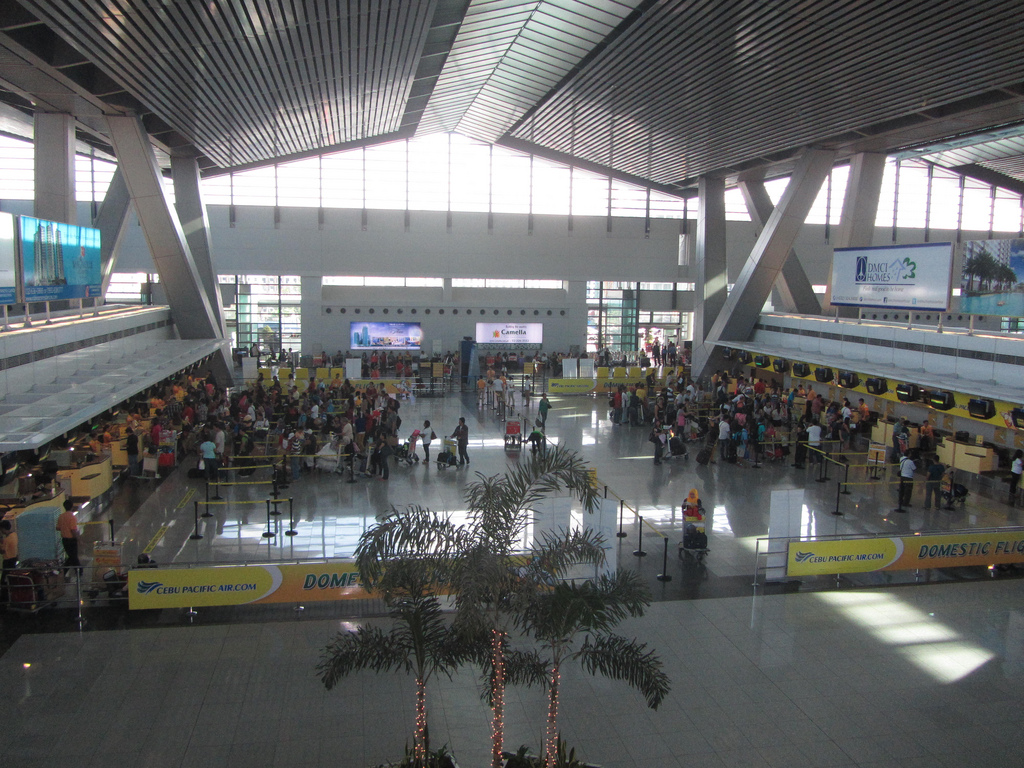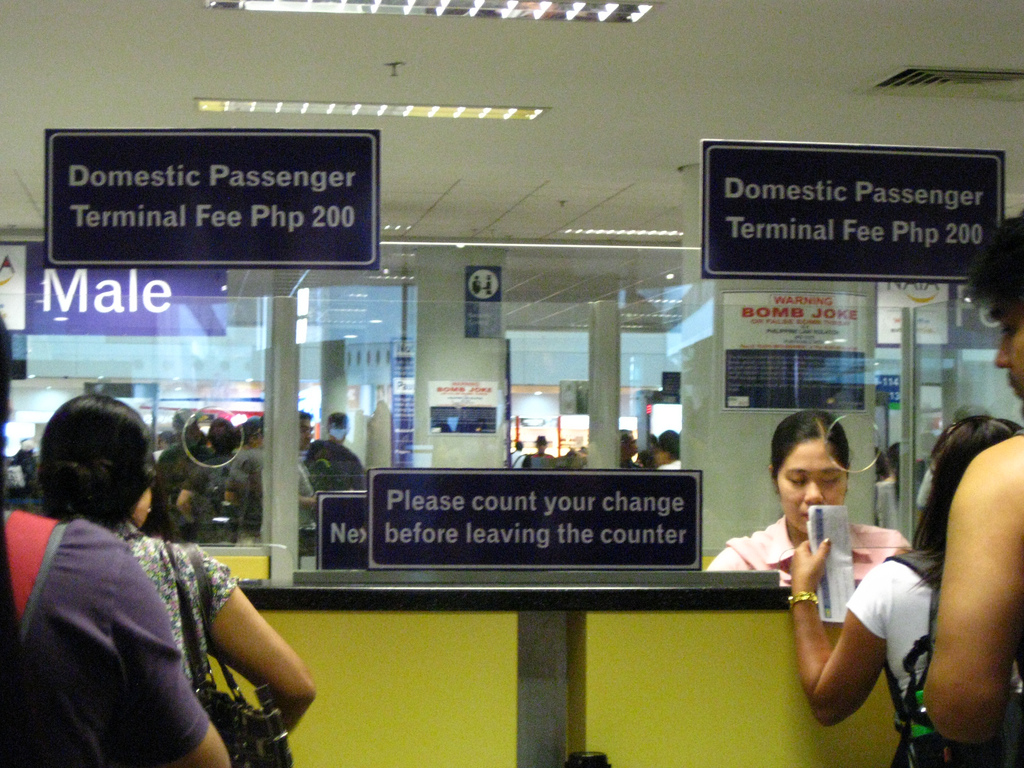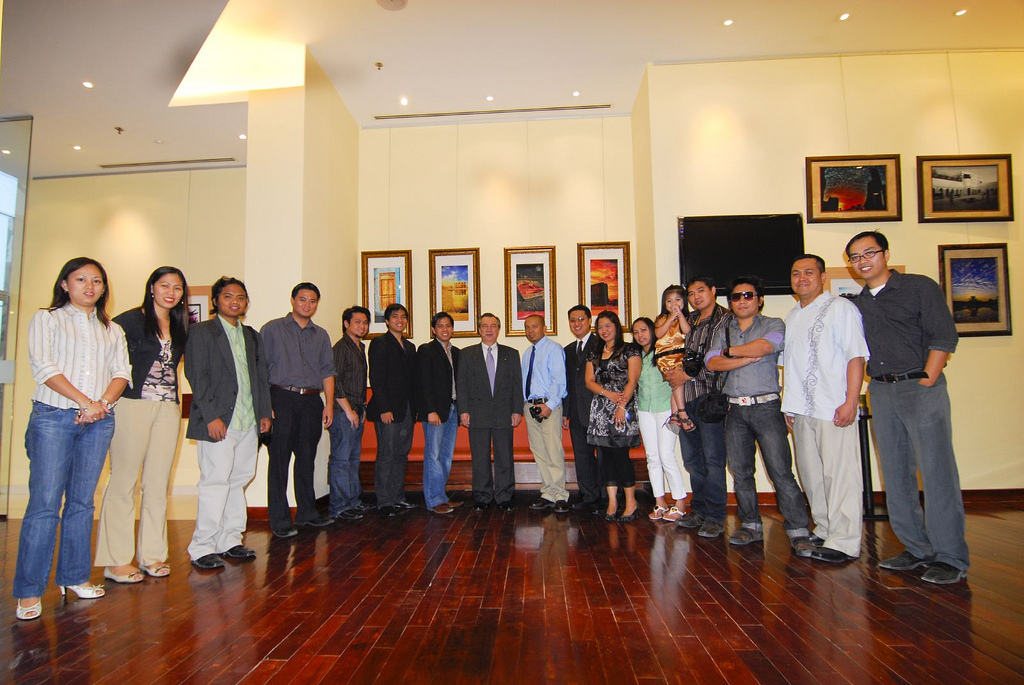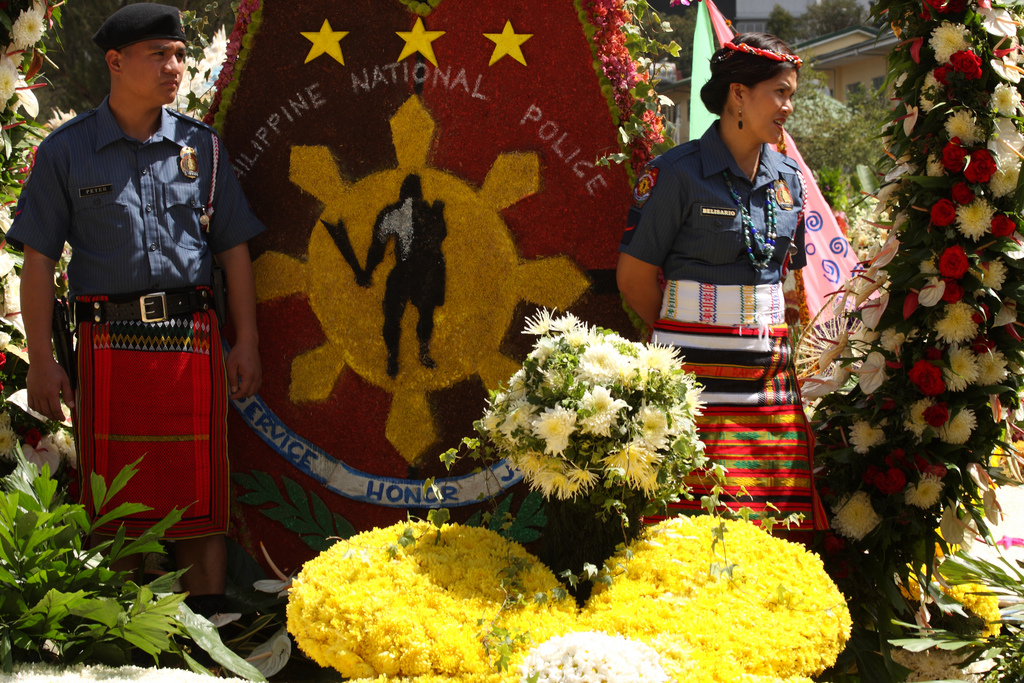Places of Interest
A colonial house in Intramuros, Manila has been the capital of the Philippines for about 500 years, as well as of Spanish Asia, and for this reason, Metro Manila, has a lot to offer, in terms of interesting areas and places.
Parks and Recreation Areas
Located west of Metro Manila, Rizal Park is the reference point for all kilometer points in the island of Luzon and the Philippines. Rizal Park features the statue of the Philippine National Hero Jose Rizal, as well as several Philippine flags, a gigantic relief map of the Philippines, scenic Chinese gardens, and the several government offices, such as the Department of Tourism. On the seaside front of Rizal Park are numerous seafood restaurants specializing in Filipino and Asian cuisine. The National Museum of the Filipino People can be also found here. It is a complex of two Greco-Roman buildings which house ancient relics, native mummies, natural treasures and factual galleries about the Philippines and other countries. The museum also boasts a vast collection of artworks and masterpieces crafted by Filipinos which were commended by the
Interesting places include the well-admired sunset of Manila Bay and the first planetarium in Southeast Asia. The Quirino Grandstand, which apart from the regular miting de avance (Spanish: political gatherings), is also a popular rendezvous of various religious groups, such as El Shaddai and other popular American-based Protestant movements, such as Benny Hinn International Ministries.
Near the Rizal Park is a 400-year-old Imperial City known as Intramuros, a walled domain which was once the seat of government during the Spanish Colonial Era and Mid-American Periods. Among the attractions are the Fort Santiago, a timeworn Spanish military fortress which was also the cell for the national hero, Jose Rizal in 1896; Casa Manila, a Spanish colonial villa which is converted into a house gallery; Manila Cathedral, the official seat of the Archbishop of Manila; San Agustin Church, the oldest existing church/building in the Philippines that survived the wars and earthquakes of Manila since 1587; Intramuros Golf Club, a prime golf course outside the walls; and the Clam Shell Tent, an exhibition center of the Department of Tourism. Horse-carriages and tourist buses are also some of the attractions. The rest also includes a walk above the walls surrounding Intramuros, government offices, universities and colonial houses.
Fort Bonifacio, or FB, is the location of military detachments, cemeteries, International schools, and world-class dining and shopping facilities. Other local recreation areas include Quezon City Memorial Circle and Ninoy Aquino Wildlife Center, both located in Diliman district of Quezon City, the posh Greenbelt Center, located in Makati City, the Cultural Center of the Philippines Complex and Bay City, both located in Pasay City. Meanwhile, the Paco Park, Arroceros Botanical Garden, Manila Zoo, Plaza Rajah Sulayman, Plaza Miranda, new Rizal Avenue Bargain Walkway, the all-steel Gothic Church of San Sebastian, the bars and night clubs of Ermita and Malate districts and the famous Roxas Boulevard Bay Walk which offers a fine view of the legendary Manila Bay sunset and hip-dining of Asian, Western and Filipino cuisine, are all located in Manila. Other shopping centers in Ortigas Center include Robinson’s Galleria, Shangri-la Plaza, and The Podium. Recently opened in Pasig is a new development called Frontera Verde, which currently hosts Tiendesitas, a tiangge-style shopping center. Soon to rise are a new SM development as well as several other malls.
In the Central Business District of Makati, the Ayala Center hosts other malls, including Glorietta and the upscale Greenbelt shopping districts. Also in Makati is the Rockwell Center. These places are frequented by most of Metro Manila’s rich.
Taguig City has a mall named Market-Market!, which is strategically located in a transportation hub.
In Manila itself, the largest malls include SM City Manila and Robinson’s Place-Ermita.
Cubao is Quezon City’s Central Commercial Area that hosts 5 malls that includes the ultra-modern Gateway Mall. Other malls include various SM chains in the metropolis. Aside from Cubao, there is also Eastwood, located along Libis.
Metro Manila has a lot of markets, locally called palengke. One of these are the Central Market, located in Quiapo district of Manila, and Divisoria Market, also in Manila. Cloverleaf Market in Balintawak, Quezon City supplies most of Metro Manila’s fruit and vegetable products. Navotas Port Market supplies most of Metro Manila’s fish products. Other smaller markets include the markets of Cubao Farmers, Nepa-Q Mart, Muñoz, Balingasa, Galas, Santa Mesa, Novaliches Talipapa, Baclaran, Pasay Libertad, and Pasay Cartimar, the latter also being one of the finest pet markets in the Philippines.
Midway between a mall and a market are the Philippine-only tiangges, or air-conditioned markets selling goods such as clothes, shoes, accessories, computer parts, mobile phones, CDs, VCDs, MP3s, iPods, and DVDs. Among these can be found in Greenhills Shopping Center in the municipality of San Juan and St. Francis Square in Mandaluyong City.
Business Districts
Makati City is widely acknowledged as the financial capital of the country where one can find the Makati Central Business District (CBD). Interesting landmarks in Makati’s Central Business District include Ayala Center, composed of Glorietta and Greenbelt, Ayala Museum, and Yuchengco Museum. Also in Makati is Rockwell Center. Most multinational company offices and embassies in the Philippines are situated in Makati. Also posing as a competitor for a vibrant business center are Bonifacio Global City in Taguig, Eastwood City in Quezon City,
Ortigas Center in Pasig City, Manila Bay City Reclamation Area in the cities of Pasay, Parañaque and Las Pinas, and Alabang Estates and Madrigal Business Park in Muntinlupa.
Dining and Nightlife
Greenbelt Park, at the heart of Makati CBD, where al fresco cafes and restaurants are situated. Dining is primarily concentrated in the vast malls, and in Greenhills, Ortigas Center, Makati, Eastwood City, Rockwell Center, and in Roxas Boulevard. Nightlife in Metro Manila is very vibrant. The districts of Malate and Ermita in Manila are popular tourist spots, while some prefer to go to Timog Avenue, especially Dapo on Scout Borromeo, and Eastwood and Acropolis in Quezon City, the Fort Bonifacio Global City in Taguig, or Ayala Center and Rockwell Center in Makati City.
Metro Manila is a place of economic extremes. Most of the rich and upper-middle class in the country reside within gated communities in places such as Forbes Park, Dasmariñas Village, Bel-Air Village, and Urdaneta Village in Makati, Loyola Heights, La Vista Subdivision, Corinthian Gardens, Greenmeadows, Capitol Hills District, Ayala Heights, Filinvest 1 and 2, Baranggay South Triangle, Baranggay West Triangle, New Manila, St. Ignatius Village, and White Plains of Quezon City, Valle Verde Village of Pasig City, Marina Village of Parañaque City, Greenhills in San Juan, and Ayala Alabang in Muntinlupa City. Other rich families opt to live urban lifestyles and instead own large apartments and condominium units such as those in the Rockwell Center in Makati and the Fort Bonifacio Global City in Taguig. That the area is populated by many of the wealthiest people in the country has also driven up the real estate value of the properties in these areas such that they are unmatched anywhere else.
There are also some smaller villages in Quezon City, Las Piñas, Parañaque, and Pasay where wealthy people also reside. Some of them are Horseshoe Village, Acropolis Village, etc.
However, practically side-by-side with the residences of Metro Manila’s elite are slums and squatter areas, most of which are in the outskirts of the aforementioned cities, as well as areas left behind by the rapid development of the rest of Metro Manila, such as Tondo and Sampaloc in Manila, Guadalupe in Makati, some parts of Marikina, Caloocan, and Valenzuela, and most parts of Navotas. Less than 10% of the population actually live in the aforementioned neighborhoods, while the rest live in non-gated (normal) neighborhoods, apartments, condominiums or slums.
Metro Manila is also characterized by a very large middle class group scattered throughout the metropolis. The middle-class group in Metro Manila enjoys much more spending power, access to education, and far better living qualities than the quite numerous poverty-stricken people that migrate to Metro Manila from the provinces.
The World-Class Toll Expressway
The metropolis has an extensive system of highways connecting the various cities and municipalities. The major roads include ten radial roads, which branch out from central Manila and five circumferential roads which form a series of concentric semi-circular arcs around downtown Manila. Most of these roads are very important transportation arteries. One is the C-4 (Circumferential Road 4), also called Epifanio de los Santos Avenue or more popularly as EDSA. It is the major thoroughfare in Metro Manila connecting five cities in Metro Manila, namely Pasay, Makati, Mandaluyong, Quezon City, and Caloocan. Some other important roads are R-1 (Radial Road 1) (Roxas Boulevard and Manila-Cavite Expressway) connecting to Cavite province in the southwest; R-3 or the South Luzon Expressway (SLEX) connecting to Laguna province in the southeast; R-6 (Aurora Boulevard and Marcos Highway) connecting to Rizal province in the east; and R-8 or the North Luzon Expressway (NLEX) connecting to Bulacan province in the north. One of its newest roads, the Diosdado Macapagal Boulevard, running on the reclamation area parallel to R-1, is one of the destinations of Manila’s elite.
An example of a U-turn slot scattered around Metro Manila Metro Manila is notorious for its traffic jams. A trip that should take 20 minutes will last an hour or more especially during rush hour. Consequently, the Metro Manila Development Authority (see section below) has constructed many projects to decongest traffic.
The Buendia section of the Metro Manila Skyway. Such projects of the MMDA for motorists are the construction of flyovers (elevated roads), interchanges, loading bays for Public Utility Vehicles (PUVs), emergency bays, and U-Turn slots over various intersections and thoroughfares, and the completion of the comprehensive railway system (see below). It has also been engaged in road widening with the support of the Department of Public Works and Highways. MMDA has also utilized projects for the pedestrians such as the installation of footbridges, waiting sheds, and men’s urinals to various roads in the metropolis. The agency has also implemented various schemes for motorists such as the Uniform Vehicular Volume Reduction Scheme (UVRRS), more popularly known as “color coding”, where vehicles whose plate numbers end in different digits are banned from traveling on different days, the Yellow Lane scheme, where yellow-plated PUBs (Public Utility Buses) will only use the two outermost lanes in EDSA, and the Organized Bus Route (OBR) for Metro Manila.
Railways
As of 2005, there are two different rapid transit systems in Metro Manila: the Manila Light Rail Transit System, or the LRT, and the Manila Metro Rail Transit System, or the MRT. The Yellow Line (LRT-1) and the Purple Line (MRT-2) form the LRT network, while the Blue Line (MRT-3) forms the MRT network, with 29 stations on the LRT and 13 stations on the MRT . Four more lines are proposed and would connect Metro Manila to the provinces of Bulacan, Cavite, Laguna and Rizal upon their completion.
Philippine National Railways also operates two main-line railway lines within Metro Manila, all part of the once-flourishing Luzon railway system. The northern line, known as Northrail and connecting Manila to Caloocan City, is currently closed. Line extensions are proposed to Valenzuela City and further on to Bulacan and Pampanga. The trans-Metro Manila portion of the still-open southern line, known as Southrail, commences at Tutuban station in Tondo, Manila, passes through the cities of Manila, Makati, Taguig, Parañaque and Las Piñas, and ends in Barangay Buli, Muntinlupa City, before entering the province of Laguna.
Airports
The country’s main airport is the Ninoy Aquino International Airport (NAIA) which straddles the boundary between Paranaque City and Pasay City. It presently consists of two terminals, while a third one will open soon. There is also a separate domestic terminal. There are two main runways and the hangar of Philippine Airlines is located near the Villamor Air Base.
There are four airport terminals in Metro Manila, all of which are located in Parañaque City, 9 kilometers south of the City of Manila.
- NAIA Terminal 1 by brownpau/Creative Commons
NAIA-1: NAIA-1 is the original terminal and was constructed in 1981. The 67,000 square meter terminal was designed by Filipino architect Leandro V. Locsin and has a design capacity of 4.5 million passengers per year. It currently serves all non-Philippine Airlines international flights. The terminal has reached capacity in 1991 and has been over capacity ever since.
NAIA-2: NAIA-2 terminal was finished in 1998 and is named the Centennial Terminal since 1998 was the centennial year of the declaration of Philippine independence. The 75,000 square meter terminal was originally designed by Aeroports de Paris to be a domestic terminal, but the design was later modified to accommodate international flights. It has a capacity of 2.5 million passengers per year in its international wing and 5 million in its domestic wing, which later will expand to nine million passengers yearly. Terminal 2 is the home of Philippine Airlines and Air Philippines and is used for both its domestic and international flights since it has the most flights out of the NAIA terminals.
NAIA-3: NAIA-3 is a modern US$500 million, 189,000 square meter facility was designed by Skidmore, Owings and Merrill (SOM) to have a capacity of 13 million passengers per year.
Domestic Airport: The Domestic Airport was built on 1948 on the old Airport Road. It currently handles all domestic air traffic, excluding Philippine Airlines and Air Philippines. Currently, the terminal is composed of two single-story buildings and serves the domestic flights of other local carriers, which are Cebu Pacific, Asian Spirit, Southeast Asian Airlines (Seair), Laoag International Airlines and Interisland Airlines.
Demographics
Ethnic Groups
Being in the heart of the Tagalog region, Tagalogs constitute the majority in Metro Manila. However, being the capital of the nation, Metro Manila has also attracted great migrations of other Filipino ethnolinguistic groups from around the country, especially those of Ilocano, Bicolano, Cebuano, Waray, and Maranao descent. Manila is the main hub of the Spanish mestizo minority. Small foreign communities include the Chinese, Americans, South Asians, Spaniards, Indonesians, Japanese, Koreans, Arabs, and various others.
Languages
Filipino (the National Language that is based on Manileño Tagalog) and English are both official languages, and virtually all Metro Manileños understand them. Other languages spoken by regional immigrants include Tagalog, Cebuano, Bicolano, Waray, Kapampangan, Ilocano, and Maranao, though there are also more than 86 different dialects in the Philippines. Foreign languages other than English spoken by a limited number of people, mostly immigrant communities, include Spanish, Sindhi, Punjabi, Japanese, Bahasa Indonesia, Korean, and several other European languages.
Religions
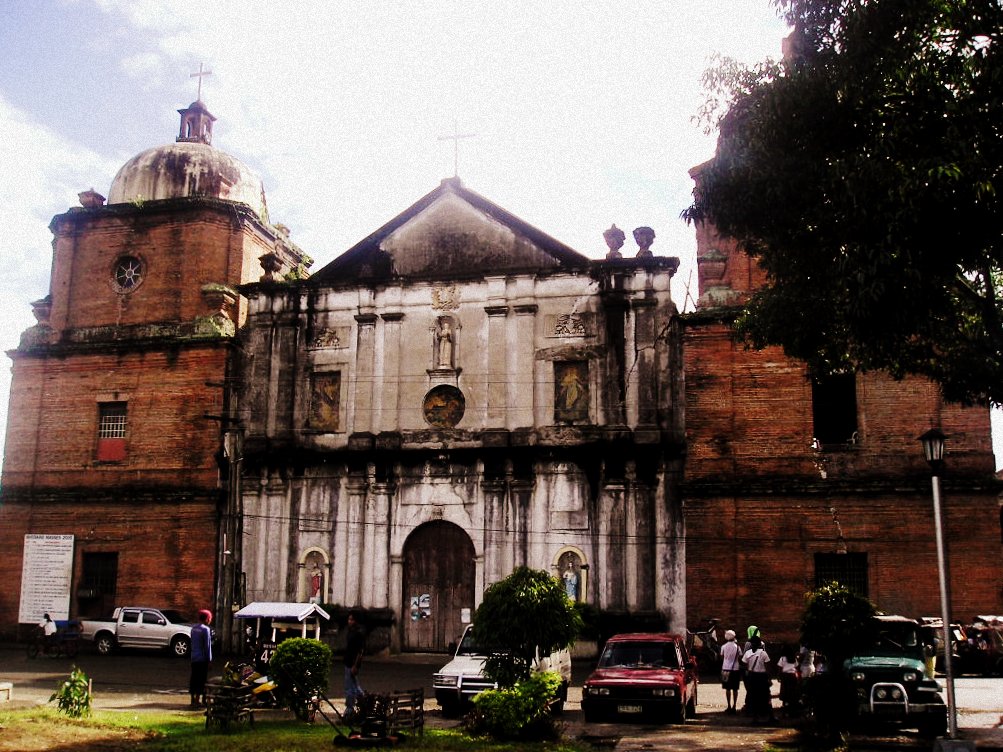
The principal religion of the Filipinos is Roman Catholicism. The Chinese and the Indians practice Buddhism and Hinduism, respectively, while those of American, Northern European, and Chinese descent tend to be Protestants. Most Maranao Filipinos and Indonesians practice Islam.
Education
Metro Manila is home to several leading Philippine educational institutions such as the Ateneo de Manila University, De La Salle University-Manila, the University of the Philippines (both the Diliman and Manila campuses), and the University of Santo Tomas. Other noteworthy institutions of higher learning include Adamson University, Arellano University, Assumption College, Centro Escolar University, the Colegio de San Juan de Letran, Far Eastern University, Miriam College, Pamantasang Lungsod ng Maynila, Philippine Normal University, Philippine Women’s University, Polytechnic University of the Philippines, San Beda College, the University of Asia and the Pacific, the University of the East, and the University of Manila.
Metro Manila is also home to numerous public and private basic education institutions, science high schools, and international schools.
Every year, thousands of students from the various countries of Asia, such as China, Japan, Korea, and Vietnam, and even from Europe go to the Philippines to study.
Police and Security
Police structure in the Philippines is centralized and its command center is located in Camp Rafael Crame in Santolan, Quezon City. Metro Manila is divided into 5 police districts namely Central (Quezon City), Western (City of Manila), Eastern (Mandaluyong, Pasig, San Juan), Northern (Caloocan, Malabon, Navotas, Valenzuela) and Southern (Makati, Muntinlupa, Las Piñas, Parañaque, Taguig and Pateros). The Armed Forces of the Philippines’ command headquarters is located in Camp Emilio Aguinaldo in Murphy, Quezon City. Metro Manila is the National Capital Region Command created by President Gloria Macapagal-Arroyo to defend the metropolis from insurgents and terrorist groups. Philippine Army headquarters is located in Fort Bonifacio in Taguig City. Philippine Air Force headquarters is located in Villamor Airbase in Pasay City. Philippine Navy headquarters was once located in Roxas Boulevard in Manila until its transfer by President Gloria Macapagal-Arroyo to Zamboanga City.
Public Utilities
Electricity
Metro Manila’s electricity is generated by the state-owned National Power Corporation (NAPOCOR) and other independent power producers across the island of Luzon. It is transmitted by the state-owned National Transmission Corporation (TransCo) through several high tension wires. It is stored and distributed by the Manila Electric Company (MERALCO). MERALCO also distributes electricity to its nearby provinces of Bulacan, Cavite and Rizal. Up to this date, MERALCO is the only company allowed to distribute electricity to the metropolis.
Water
Metro Manila’s tap water is sourced from the Angat Dam in Norzagaray, Bulacan. It is stored in the Novaliches Reservoir located in the Northeast of Quezon City. It is filtered in the La Mesa Dam also in the Northeast. Metro Manila’s water distribution and sewerage system was used to be managed by the Metropolitan Water and Sewerage System (MWSS), a state-owned company. In 1996, MWSS awarded concessionaire licenses to two private corporations. Metro Manila was sliced into two distribution areas.
Maynilad Water Services Inc. (MWSI). It is owned by the Benpres Holdings Company, who also owned a majority share of MERALCO.
Communications
Since 1925, the Philippine Long Distance Telephone Company (PLDT) was the Philippines’ only phone carrier. With the passage of the National Telecommunications Act of 1995, the Philippine National Telecommunications Commission (NTC) granted licenses to new and independent companies to install new phones across the Philippines. The NTC granted 3 new licenses for Metro Manila.
There are three wireless telecommunication companies serving Metro Manila as well as the rest of the Philippines. These are :
Smart Communications/ Pilipino Telecommunications Corp., a PLDT subsidiary – using the brands Smart,Talk n Text, and Addict Mobile
Globe Telecom – using the brands Globe/Globe Handyphone, and Touch Mobile
Digitel Mobile – using the brand Sun Cellular.
Metropolitan Manila Development Authority
The Metropolitan Manila Development Authority (MMDA) is the administrative body in charge of the metropolis’ development, and solving perennial problems such as traffic management, flood control, garbage disposal and sewage maintenance. It closely coordinates with various other organizations such as the Pasig River Rehabilitation Commission (PRRC) and the Department of Public Works and Highways (DPWH), as well as the local government units of the component cities and municipalities. Its agency’s head is appointed by the president, which is now presided by Chairman Bayani Fernando. It is a member of Asian Network of Major Cities 21.
